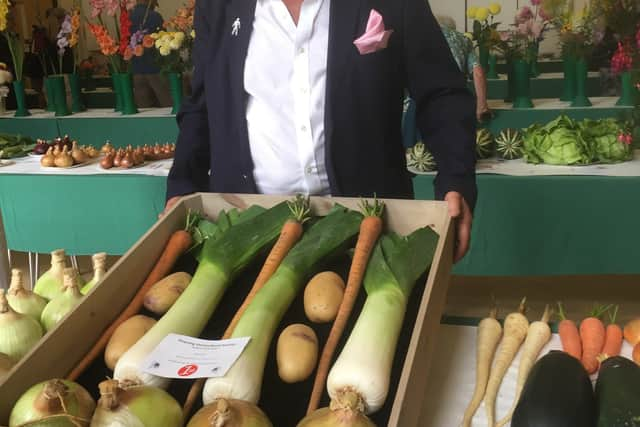The veg plot is starting to burst into action in Sussex gardens
and live on Freeview channel 276
The apple trees are covered in wonderful pink and white blossom, raspberries are sending up their new canes and asparagus is starting to peep out of the ground.
The old Victorian gardeners called asparagus Cuckoo Grass. Asparagus appears in April and is most plentiful in May, by the middle of June you should stop picking it, helping it to build up its strength for the following year.
Advertisement
Hide AdAdvertisement
Hide AdNow spring has arrived, so has the warmer weather, hopefully you were able to take advantage of this during the past week of lockdown and managed to create a vegetable plot and have now got your soil dug over.


I expect whilst you were digging you came across a few worms. I was always taught you can tell how good the ground is for growing vegetables by the amount of worms that are in it. Worms help to keep the soil in good order, after they digest their meal of organic matter they then produce excrement that helps to enrich the soil with phosphorus, calcium and nitrogen.
The photo here is of my last year’s entry for four distinct kinds of vegetables at the local Flower Show. The onions belong to the allium family. You still have time to plant your onions. The easiest onions to grow are sets, these are the small bulbs which come in two different colours, the red sets are the sweetest because of the higher sugar content but they do tend to burn quicker when frying them. I grow a variety called “Red Cross.”
Rake over your soil to obtain a fine tilth, make up a line to stretch across your plot with two canes and a piece of string. Plant your sets with the pointed end up and round end into the ground, just leaving the point of the bulb showing out of the ground.
Advertisement
Hide AdAdvertisement
Hide AdI find it best to use a trowel for this and lay the trowel next to the planted bulb and where the end of the trowel finishes plant your next onion.
The white variety I grow is ‘Shakespeare’ which can be planted in the same way.
I know that most garden centres have now had to close, but I have found most seed companies are still taking on-line and phone orders. I purchase my onion sets from Marshall seeds at marshallsgarden.com or Kings seeds www.kingsseeds.com
It is now a good time to start sowing your leeks for the coming season. Just get a medium size pot, fill it with multi purpose compost, get a pinch of leek seed and sprinkle it evenly onto the compost. Cover it with a fine layer of soil, water it well and place on your windowsill or if possible in a greenhouse or coldframe. I grow a variety called Krypton. A good disease-resistant early compact leek.
Advertisement
Hide AdAdvertisement
Hide AdNow the weather has warmed up a bit, it’s an ideal time to plant your carrots. Carrots like a fine stone-free soil to stop them forking and to grow nice and straight.
If you have a raised bed this is ideal for carrots. Fill a section with multi-purpose compost mixed with a little sand, make a small drill with the edge of your hoe about 1.5cm deep.
I grow a variety called Amsterdam Forcing. As the carrots grow you can gradually thin them out by picking the carrots when they are young, they are wonderful with dips or summer salads. Leave the others to get bigger for winter stews.
The final crop in my box is potatoes. There are three types of potatoes, earlies, second earlies and main crop. I grow a second early variety called ‘Kestrel’
Advertisement
Hide AdAdvertisement
Hide AdI find it is both good for digging early and also left for roasting later in the season.
The traditional way of growing potatoes is digging a trench in which to plant the potatoes, bury them and, as they start to show through the ground, earth them up.
I find it is much easier to grow them in potato sacks, these can be purchased from most seed suppliers. If you haven’t got time to get them you can grow them in a large pot or even an old bucket providing you make sure you drill holes in the bottom for drainage.
Fill the bag, pot or bucket with about six inches of multi purpose compost, place two potato tubers on the compost then cover them with another six inches of compost.
Advertisement
Hide AdAdvertisement
Hide AdAfter a few weeks you will see the green shoots coming through, at this stage you can then top up the bag, pot or bucket to about four inches from the top.
Keep the potatoes well watered, always remember potatoes are made up of seventy per cent water. I find this is by far the best method of growing potatoes, they come out much cleaner and disease free. You can just put your hand in the bag and take out as many potatoes as you need that day and don’t have to dig a whole root.
Good Luck